- Home
- Vladimir Nabokov
Ada, or Ardor
Ada, or Ardor Read online
BOOKS BY Vladimir Nabokov
NOVELS
Mary
King, Queen, Knave
The Defense
The Eye
Glory
Laughter in the Dark
Despair
Invitation to a Beheading
The Gift
The Real Life of Sebastian Knight
Bend Sinister
Lolita
Pnin
Pale Fire
Ada or Ardor: A Family Chronicle
Transparent Things
Look at the Harlequins!
SHORT FICTION
Nabokov’s Dozen
A Russian Beauty and Other Stories
Tyrants Destroyed and Other Stories
Details of a Sunset and Other Stories
The Enchanter
DRAMA
The Waltz Invention
Lolita: A Screenplay
The Man from the USSR and Other Plays
AUTOBIOGRAPHY AND INTERVIEWS
Speak, Memory: An Autobiography Revisited
Strong Opinions
BIOGRAPHY AND CRITICISM
Nikolai Gogol
Lectures on Literature
Lectures on Russian Literature
Lectures on Don Quixote
TRANSLATIONS
Three Russian Poets: Translations of Pushkin,
Lermontov, and Tiutchev
A Hero of Our Time (Mikhail Lermontov)
The Song of Igor’s Campaign (Anon.)
Eugene Onegin (Alexander Pushkin)
LETTERS
Dear Bunny, Dear Volodya:
The Nabokov-Wilson Letters, 1940–1971
Vladimir Nabokov: Selected Letters, 1940–1977
MISCELLANEOUS
Poems and Problems
The Annotated Lolita
FIRST VINTAGE INTERNATIONAL EDITION, FEBRUARY 1990
Copyright © 1969 by Article 3 C Trust
under the will of Vladimir Nabokov
Notes copyright © 1970
by Vladimir Nabokov
All rights reserved under International and Pan-American Copyright Conventions. Published in the United States by Vintage Books, a division of Random House, Inc., New York. Originally published by McGraw Hill Book Company, New York, in 1969. This edition published by arrangement with the Estate of Vladimir Nabokov.
Library of Congress Cataloging-in-Publication Data
Nabokov, Vladimir, 1899–1977.
Ada, or, Ardor, a family chronicle/Vladimir Nabokov.—1st Vintage international ed.
p. cm.—(Vintage international)
“Originally published by McGraw Hill Book Company … in 1969”—T.p. verso.
eISBN: 978-0-307-78801-6
I. Title. II. Title: Ada. III. Title: Ardor, a family Chronicle.
PS3527.A15A65 1990
813.54—dc20
89-40107
CIP
Cover art by Chip Kidd
Cover photograph by Alison Gootee
v3.1
To Véra
With the exception of Mr. and Mrs. Ronald Oranger,
a few incidental figures,
and some non-American citizens, all the persons
mentioned by name in this book are dead.
[Ed.]
Contents
Cover
Other Books by This Author
Title Page
Copyright
Dedication
Epigraph
Part One
Chapter 1
Chapter 2
Chapter 3
Chapter 4
Chapter 5
Chapter 6
Chapter 7
Chapter 8
Chapter 9
Chapter 10
Chapter 11
Chapter 12
Chapter 13
Chapter 14
Chapter 15
Chapter 16
Chapter 17
Chapter 18
Chapter 19
Chapter 20
Chapter 21
Chapter 22
Chapter 23
Chapter 24
Chapter 25
Chapter 26
Chapter 27
Chapter 28
Chapter 29
Chapter 30
Chapter 31
Chapter 32
Chapter 33
Chapter 34
Chapter 35
Chapter 36
Chapter 37
Chapter 38
Chapter 39
Chapter 40
Chapter 41
Chapter 42
Chapter 43
Part Two
Chapter 1
Chapter 2
Chapter 3
Chapter 4
Chapter 5
Chapter 6
Chapter 7
Chapter 8
Chapter 9
Chapter 10
Chapter 11
Part Three
Chapter 1
Chapter 2
Chapter 3
Chapter 4
Chapter 5
Chapter 6
Chapter 7
Chapter 8
Part Four
Chapter 1
Part Five
Chapter 1
Chapter 2
Chapter 3
Chapter 4
Chapter 5
Chapter 6
Notes to Ada by Vivian Darkbloom
About the Author
Books by Vladimir Nabokov
Part One
1
“All happy families are more or less dissimilar; all unhappy ones are more or less alike,” says a great Russian writer in the beginning of a famous novel (Anna Arkadievitch Karenina, transfigured into English by R. G. Stonelower, Mount Tabor Ltd., 1880). That pronouncement has little if any relation to the story to be unfolded now, a family chronicle, the first part of which is, perhaps, closer to another Tolstoy work, Detstvo i Otrochestvo (Childhood and Fatherland, Pontius Press, 1858).
Van’s maternal grandmother Daria (“Dolly”) Durmanov was the daughter of Prince Peter Zemski, Governor of Bras d’Or, an American province in the Northeast of our great and variegated country, who had married, in 1824, Mary O’Reilly, an Irish woman of fashion. Dolly, an only child, born in Bras, married in 1840, at the tender and wayward age of fifteen, General Ivan Durmanov, Commander of Yukon Fortress and peaceful country gentleman, with lands in the Severn Tories (Severnïya Territorii), that tesselated protectorate still lovingly called “Russian” Estoty, which commingles, granoblastically and organically, with “Russian” Canady, otherwise “French” Estoty, where not only French, but Macedonian and Bavarian settlers enjoy a halcyon climate under our Stars and Stripes.
The Durmanovs’ favorite domain, however, was Raduga near the burg of that name, beyond Estotiland proper, in the Atlantic panel of the continent between elegant Kaluga, New Cheshire, U.S.A., and no less elegant Ladoga, Mayne, where they had their town house and where their three children were born: a son, who died young and famous, and a pair of difficult female twins. Dolly had inherited her mother’s beauty and temper but also an older ancestral strain of whimsical, and not seldom deplorable, taste, well reflected, for instance, in the names she gave her daughters: Aqua and Marina (“Why not Tofana?” wondered the good and sur-royally antlered general with a controlled belly laugh, followed by a small closing cough of feigned detachment—he dreaded his wife’s flares).
On April 23, 1869, in drizzly and warm, gauzy and green Kaluga, Aqua, aged twenty-five and afflicted with her usual vernal migraine, married Walter D. Veen, a Manhattan banker of ancient Anglo-Irish ancestry who had long conducted, and was soon to resume intermittently, a passionate affair with Mari
na. The latter, some time in 1871, married her first lover’s first cousin, also Walter D. Veen, a quite as opulent, but much duller, chap.
The “D” in the name of Aqua’s husband stood for Demon (a form of Demian or Dementius), and thus was he called by his kin. In society he was generally known as Raven Veen or simply Dark Walter to distinguish him from Marina’s husband, Durak Walter or simply Red Veen. Demon’s twofold hobby was collecting old masters and young mistresses. He also liked middle-aged puns.
Daniel Veen’s mother was a Trumbell, and he was prone to explain at great length—unless sidetracked by a bore-baiter—how in the course of American history an English “bull” had become a New England “bell.” Somehow or other he had “gone into business” in his twenties and had rather rankly grown into a Manhattan art dealer. He did not have—initially at least—any particular liking for paintings, had no aptitude for any kind of salesmanship, and no need whatever to jolt with the ups and down of a “job” the solid fortune inherited from a series of far more proficient and venturesome Veens. Confessing that he did not much care for the countryside, he spent only a few carefully shaded summer weekends at Ardis, his magnificent manor near Ladore. He had revisited only a few times since his boyhood another estate he had, up north on Lake Kitezh, near Luga, comprising, and practically consisting of, that large, oddly rectangular though quite natural body of water which a perch he had once clocked took half an hour to cross diagonally and which he owned jointly with his cousin, a great fisherman in his youth.
Poor Dan’s erotic life was neither complicated nor beautiful, but somehow or other (he soon forgot the exact circumstances as one forgets the measurements and price of a fondly made topcoat worn on and off for at least a couple of seasons) he fell comfortably in love with Marina, whose family he had known when they still had their Raduga place (later sold to Mr. Eliot, a Jewish businessman). One afternoon in the spring of 1871, he proposed to Marina in the Up elevator of Manhattan’s first ten-floor building, was indignantly rejected at the seventh stop (Toys), came down alone and, to air his feelings, set off in a counter-Fogg direction on a triple trip round the globe, adopting, like an animated parallel, the same itinerary every time. In November 1871, as he was in the act of making his evening plans with the same smelly but nice cicerone in a café-au-lait suit whom he had hired already twice at the same Genoese hotel, an aerocable from Marina (forwarded with a whole week’s delay via his Manhattan office which had filed it away through a new girl’s oversight in a dove hole marked RE AMOR) arrived on a silver salver telling him she would marry him upon his return to America.
According to the Sunday supplement of a newspaper that had just begun to feature on its funnies page the now long defunct Goodnight Kids, Nicky and Pimpernella (sweet siblings who shared a narrow bed), and that had survived with other old papers in the cockloft of Ardis Hall, the Veen-Durmanov wedding took place on St. Adelaida’s Day, 1871. Twelve years and some eight months later, two naked children, one dark-haired and tanned, the other dark-haired and milk-white, bending in a shaft of hot sunlight that slanted through the dormer window under which the dusty cartons stood, happened to collate that date (December 16, 1871) with another (August 16, same year) anachronistically scrawled in Marina’s hand across the corner of a professional photograph (in a raspberry-plush frame on her husband’s kneehole library table) identical in every detail—including the commonplace sweep of a bride’s ectoplasmic veil, partly blown by a parvis breeze athwart the groom’s trousers—to the newspaper reproduction. A girl was born on July 21, 1872, at Ardis, her putative father’s seat in Ladore County, and for some obscure mnemonic reason was registered as Adelaida. Another daughter, this time Dan’s very own, followed on January 3, 1876.
Besides that old illustrated section of the still existing but rather gaga Kaluga Gazette, our frolicsome Pimpernel and Nicolette found in the same attic a reel box containing what turned out to be (according to Kim, the kitchen boy, as will be understood later) a tremendous stretch of microfilm taken by the globetrotter, with many of its quaint bazaars, painted cherubs and pissing urchins reappearing three times at different points, in different shades of heliocolor. Naturally, at a time one was starting to build a family one could not display very well certain intérieurs (such as the group scenes in Damascus starring him and the steadily cigar-smoking archeologist from Arkansas with the fascinating scar on his liver side, and the three fat whores, and old Archie’s premature squitteroo, as the third male member of the party, a real British brick, drolly called it); yet most of the film, accompanied by purely factual notes, not always easy to locate—because of the elusive or misleading bookmarks in the several guidebooks scattered around—was run by Dan many times for his bride during their instructive honeymoon in Manhattan.
The two kids’ best find, however, came from another carton in a lower layer of the past. This was a small green album with neatly glued flowers that Marina had picked or otherwise obtained at Ex, a mountain resort, not far from Brig, Switzerland, where she had sojourned before her marriage, mostly in a rented chalet. The first twenty pages were adorned with a number of little plants collected at random, in August, 1869, on the grassy slopes above the chalet, or in the park of the Hotel Florey, or in the garden of the sanatorium near it (“my nusshaus,” as poor Aqua dubbed it, or “the Home,” as Marina more demurely identified it in her locality notes). Those introductory pages did not present much botanical or psychological interest; and the fifty last pages or so remained blank; but the middle part, with a conspicuous decrease in number of specimens, proved to be a regular little melodrama acted out by the ghosts of dead flowers. The specimens were on one side of the folio, with Marina Dourmanoff (sic)’s notes en regard.
Ancolie Bleue des Alpes, Ex en Valais, i.IX.69. From Englishman in hotel. “Alpine Columbine, color of your eyes.”
Epervière auricule. 25.x.69, Ex, ex Dr. Lapiner’s walled alpine garden.
Golden [ginkgo] leaf: fallen out of a book “The Truth about Terra” which Aqua gave me before going back to her Home. 14.XII.69.
Artificial edelweiss brought by my new nurse with a note from Aqua saying it came from a “mizernoe and bizarre” Christmas Tree at the Home. 25.XII.69.
Petal of orchid, one of 99 orchids, if you please, mailed to me yesterday, Special Delivery, c’est bien le cas de le dire, from Villa Armina, Alpes Maritimes. Have laid aside ten for Aqua to be taken to her at her Home. Ex en Valais, Switzerland. “Snowing in Fate’s crystal ball,” as he used to say. (Date erased.)
Gentiane de Koch, rare, brought by lapochka [darling] Lapiner from his “mute gentiarium” 5.1. 1870.
[blue-ink blot shaped accidentally like a flower, or improved felt-pen deletion] Compliquaria compliquata var. aquamarina. Ex, 15.1.70.
Fancy flower of paper, found in Aqua’s purse. Ex, 16.11.1870, made by a fellow patient, at the Home, which is no longer hers.
Gentiana verna (printanière). Ex, 28.111.1870, on the lawn of my nurse’s cottage. Last day here.
The two young discoverers of that strange and sickening treasure commented upon it as follows:
“I deduce,” said the boy, “three main facts: that not yet married Marina and her married sister hibernated in my lieu de naissance; that Marina had her own Dr. Krolik, pour ainsi dire; and that the orchids came from Demon who preferred to stay by the sea, his dark-blue great-grandmother.”
“I can add,” said the girl, “that the petal belongs to the common Butterfly Orchis; that my mother was even crazier than her sister; and that the paper flower so cavalierly dismissed is a perfectly recognizable reproduction of an early-spring sanicle that I saw in profusion on hills in coastal California last February. Dr. Krolik, our local naturalist, to whom you, Van, have referred, as Jane Austen might have phrased it, for the sake of rapid narrative information (you recall Brown, don’t you, Smith?), has determined the example I brought back from Sacramento to Ardis, as the Bear-Foot, B,E,A,R, my love, not my foot or yours, or the Stabian flower girl’s—
an allusion, which your father, who, according to Blanche, is also mine, would understand like this” (American finger-snap). “You will be grateful,” she continued, embracing him, “for my not mentioning its scientific name. Incidentally the other foot—the Pied de Lion from that poor little Christmas larch, is by the same hand—possibly belonging to a very sick Chinese boy who came all the way from Barkley College.”
“Good for you, Pompeianella (whom you saw scattering her flowers in one of Uncle Dan’s picture books, but whom I admired last summer in a Naples museum). Now don’t you think we should resume our shorts and shirts and go down, and bury or burn this album at once, girl. Right?”
“Right,” answered Ada. “Destroy and forget. But we still have an hour before tea.”
Re the “dark-blue” allusion, left hanging:
A former viceroy of Estoty, Prince Ivan Temnosiniy, father of the children’s great-great-grandmother, Princess Sofia Zemski (1755–1809), and a direct descendant of the Yaroslav rulers of pre-Tartar times, had a millennium-old name that meant in Russian “dark blue.” While happening to be immune to the sumptuous thrills of genealogic awareness, and indifferent to the fact that oafs attribute both the aloofness and the fervor to snobbishness, Van could not help feeling esthetically moved by the velvet background he was always able to distinguish as a comforting, omnipresent summer sky through the black foliage of the family tree. In later years he had never been able to reread Proust (as he had never been able to enjoy again the perfumed gum of Turkish paste) without a roll-wave of surfeit and a rasp of gravelly heartburn; yet his favorite purple passage remained the one concerning the name “Guermantes,” with whose hue his adjacent ultramarine merged in the prism of his mind, pleasantly teasing Van’s artistic vanity.
Hue or who? Awkward. Reword! (marginal note in Ada Veen’s late hand).
2
Marina’s affair with Demon Veen started on his, her, and Daniel Veen’s birthday, January 5, 1868, when she was twenty-four and both Veens thirty.
As an actress, she had none of the breath-taking quality that makes the skill of mimicry seem, at least while the show lasts, worth even more than the price of such footlights as insomnia, fancy, arrogant art; yet on that particular night, with soft snow falling beyond the plush and the paint, la Durmanska (who paid the great Scott, her impresario, seven thousand gold dollars a week for publicity alone, plus a bonny bonus for every engagement) had been from the start of the trashy ephemeron (an American play based by some pretentious hack on a famous Russian romance) so dreamy, so lovely, so stirring, that Demon (not quite a gentleman in amorous matters) made a bet with his orchestra-seat neighbor, Prince N., bribed a series of green-room attendants, and then, in a cabinet reculé (as a French writer of an earlier century might have mysteriously called that little room in which the broken trumpet and poodle hoops of a forgotten clown, besides many dusty pots of colored grease, happened to be stored) proceeded to possess her between two scenes (Chapter Three and Four of the martyred novel). In the first of these she had undressed in graceful silhouette behind a semitransparent screen, reappeared in a flimsy and fetching nightgown, and spent the rest of the wretched scene discussing a local squire, Baron d’O., with an old nurse in Eskimo boots. Upon the infinitely wise countrywoman’s suggestion, she goose-penned, from the edge of her bed, on a side table with cabriole legs, a love letter and took five minutes to reread it in a languorous but loud voice for nobody’s benefit in particular since the nurse sat dozing on a kind of sea chest, and the spectators were mainly concerned with the artificial moonlight’s blaze upon the lovelorn young lady’s bare arms and heaving breasts.

 Lolita
Lolita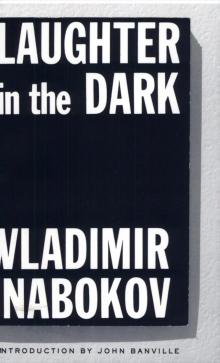 Laughter in the Dark
Laughter in the Dark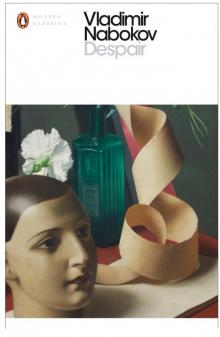 Despair
Despair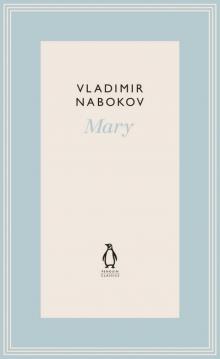 Mary
Mary The Enchanter
The Enchanter Pnin
Pnin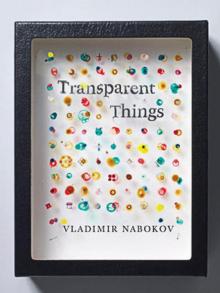 Transparent Things
Transparent Things The Real Life of Sebastian Knight
The Real Life of Sebastian Knight Bend Sinister
Bend Sinister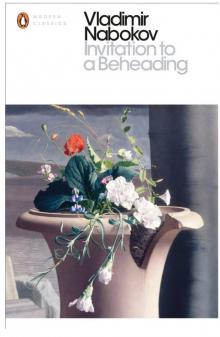 Invitation to a Beheading
Invitation to a Beheading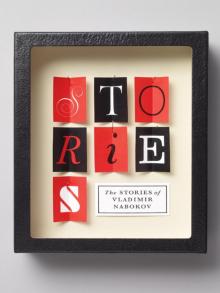 The Stories of Vladimir Nabokov
The Stories of Vladimir Nabokov The Eye
The Eye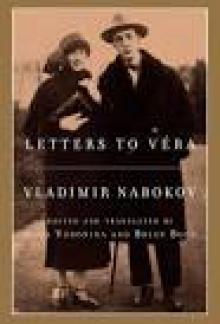 Letters to Véra
Letters to Véra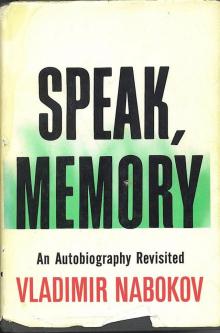 Speak, Memory
Speak, Memory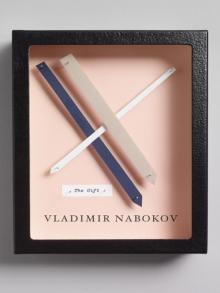 The Gift
The Gift The Luzhin Defense
The Luzhin Defense Pale Fire
Pale Fire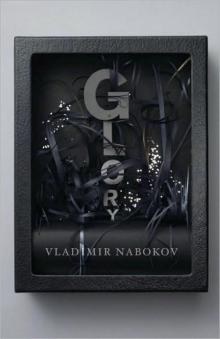 Glory
Glory Man From the USSR & Other Plays
Man From the USSR & Other Plays Vladimir Nabokov: Selected Letters 1940-1977
Vladimir Nabokov: Selected Letters 1940-1977 Strong opinions
Strong opinions Look at the Harlequins!
Look at the Harlequins!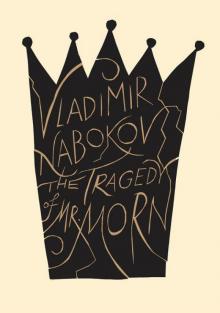 The Tragedy of Mister Morn
The Tragedy of Mister Morn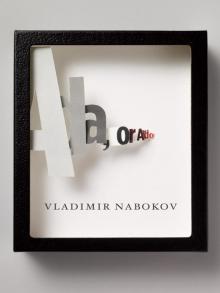 Ada, or Ardor
Ada, or Ardor Lectures on Russian literature
Lectures on Russian literature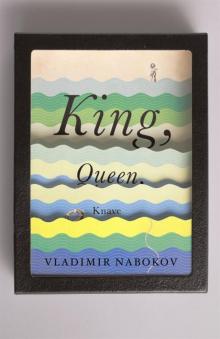 King, Queen, Knave
King, Queen, Knave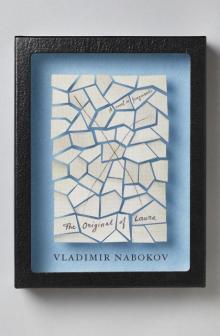 The Original of Laura
The Original of Laura